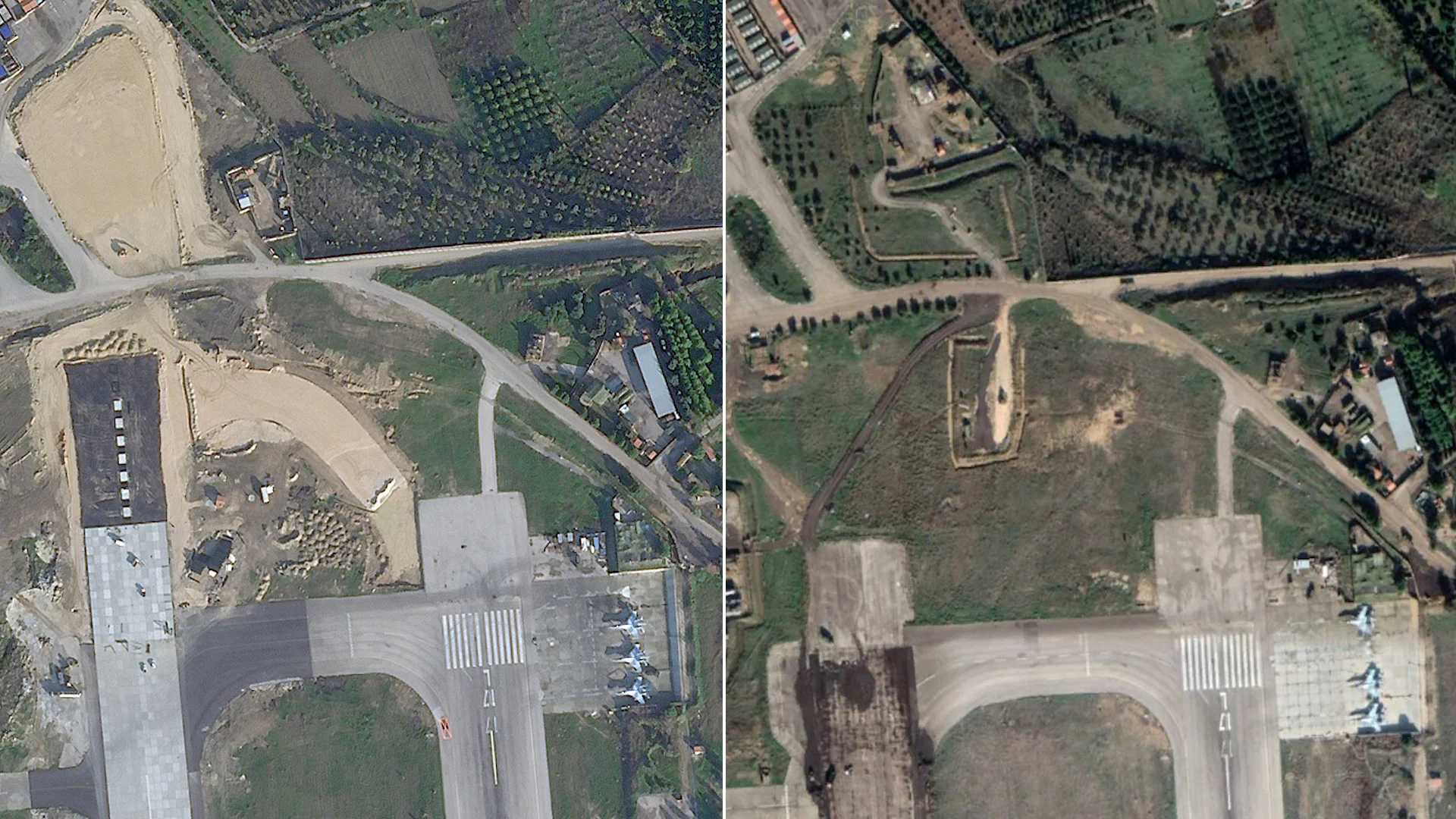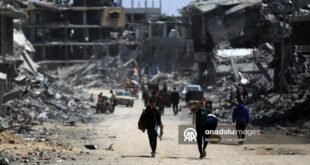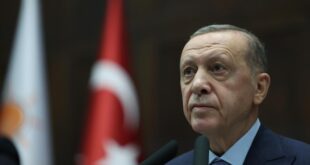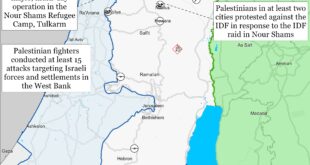
Satellite imagery that The War Zone has obtained of Russia’s Khmeimim air base outpost in Syria shows work ongoing to extend one of its two main runways by around 1,000 feet. The extension would allow the base to support more regular deployments of larger and more heavily-laden aircraft, including heavy airlifters and even potentially bombers.
Khmeimim, situated in Syria’s coastal Latakia governorate, has been a major hub for the Kremlin’s military intervention in that country, which began in 2015. Two years later, the Russian government signed a new long-term lease for the base with Syrian authorities, as part of a larger deal that also saw Russia extend its access to port facilities at Tartus, further to the south, for at least another 49 years. This arrangement came after Russian forces, especially combat airpower, had been instrumental in preventing the collapse of the regime of Syrian dictator Bashar Al Assad.
At the same time, the base also presents a strategically valuable airfield outside of Russia that can support broader military activities, especially in the Middle East, North Africa, and the Eastern Mediterranean Sea. For instance, the base provided a useful intermediate staging point for MiG-29 Fulcrum fighters and Su-24 Fencer combat jets that Russia sent to Libya to bolster forces aligned with rogue General Khalifa Haftar, which is engaged in a civil conflict with the country’s United Nations-recognized and predominantly Turkish-backed government. You can read more about that in these past War Zone stories.
The base, which has two parallel runways that run north-south, has already seen major expansions and additions since Russian forces first arrived there in significant numbers six years ago. Starting in 2015, substantial portions of the installation have been effectively rebuilt or otherwise substantially improved, including expanded helicopter facilities, support infrastructure, and defenses.
This included the addition of an approximately 819,000-square-foot ramp with direct access to the eastern runway that was completed in 2016, as well as a row of hardened aircraft shelters at the northwest corner of the facility that was built between 2018 and 2019 in response to the threat of drone attacks and other indirect fire weapons. Between New Year’s Eve 2017 and the end of the first week of January 2018, the base was subjected to at least two mass drone attacks, that killed multiple personnel and damaged or destroyed a number of aircraft.
The satellite imagery that The War Zone obtained from Planet Labs, which is dated Dec. 14, 2020, shows that extensions are being added to both ends of the western runway, bringing it from its previous length of approximately 9,500 feet, as it had been since 2015, to around 10,500 feet. A taxiway also appears to be being constructed to link the northern ends of the base’s two runways.
It’s possible that the full length of the runway will ultimately be even longer given what could be preparations for a further additional section across what is now a road at the northern end of the base. If this is indeed the full planned length of the runway, it could add around another 750 feet.
The extensions appear to be outgrowths of resurfacing work that began in 2017, which looks now to be close to completion. Runway improvement efforts over the years have also included the construction of three new taxiways linking the base’s two runways together at various points.
The western runway, as a whole, has been ostensibly closed to flight operations since 2016, with “X” markings appearing at either end that year, though satellite imagery has shown aircraft on it since then. When it formally opens in its extended form, it will represent a significant expansion of the overall base’s capabilities.
Russia’s larger airlifters, including massive An-124s, have already made many trips to Khmeimim, but the longer runway could allow them to fly in and out of the base at greater gross weights, especially during hotter times of the year. This means that these aircraft will be able to bring in more cargo and passengers on each flight, streamlining routine operations to the base, which serves as an important logistical conduit for Russian forces throughout Syria. The extra runway would also provide better safety margins for rejected takeoff situations.
An extended runway would also enable individual cargo aircraft to bring in larger payloads on short notice to support planned surges in operational activity or respond to sudden changes in fighting in the country. It could also provide a useful intermediate staging point for heavily-laden Russian airlifters, none of which are aerial refueling capable, headed for other countries in the region, such as Libya, and beyond.
The extension and rehabilitation of the western runway at Khmeimim could also be envisioned as a way to better accommodate any of Russia’s current trio of bombers, the Tu-22M3, the Tu-95MS, and Tu-160. Russia has employed bombers over Syria in the past, but has done so through long-range strike or cruise missile launch sorties that see them fly circuitous round trip routes from its own territory. In 2016, it also deployed Tu-22M bombers to a base in Iran to support its Syrian campaign.
Having the ability to stage bombers at Khmeimim, even on short-duration employments, would offer a much less politically complex basing alternative for employing these aircraft in the ongoing fighting in Syria. At the same time, routine bomber deployments to the base would also provide valuable strategic power projection.
Bombers, as well as long-range Tu-142 maritime patrol aircraft, which are based on the same design as the Tu-95MS bomber, flying sorties out into the Mediterranean, especially, could present new challenges for NATO on its southern flank. Russian bombers, flying from Khmeimim and armed with cruise missiles would be able to hold targets in Europe at risk from an entirely new southern vector and could also engage naval assets in the Mediterranean during any potential conflict. Those aircraft would also be better postured to respond to crises and contingencies in the Middle East and North Africa. Russia has already demonstrated an interest in being able to push bombers beyond its borders in recent years, including to other locations with strategic significance, notably Venezuela, to the chagrin of the United States.
There are certainly questions about the ability of Khmeimim’s other facilities to handle any massive additional influx of bigger aircraft, whether they be cargo planes or bombers. The eastern ramp is presently the primary place where any sort of larger aircraft, also including A-50U airborne early warning and control aircraft and Il-20 spy planes, park now. Older satellite imagery shows that even after that ramp was built, An-124s still used the closed western runway to unload cargo, before the resurfacing work appeared to put an end to that, as well.
At the same time, the extension of the western runway could very well be followed by a similar improvement project for the eastern runway, as well as other construction elsewhere on the base. There is certainly space for development with the base’s existing perimeter, though the entire facility is situated within a populated area and it could be more difficult to enlarge its overall size.
Regardless, the ongoing construction that is visible now only underscores the continued importance of Khmeimim to Russia, both for its ongoing efforts in Syria and beyond. The runway extension and any other subsequent efforts to expand the base would only help grow its overall strategic significance for the Kremlin.
There are already indications that, while fighting is certainly still going on in Syria, that the Russian presence in Latakia has become steadily more regularized over the past six years. This could further point to a long-term vision on the Kremlin’s part that sees Khmeimim continue to evolve into a more general-purpose Russian military outpost abroad.
“At this spot where we are now there was only an impenetrable thicket and these white concrete lego-like modular houses. Here, on an asphalt square, we began to deploy the food battalion and the lunchroom,” Igor Tsaryov, the Russian Deputy Chief of Staff for Khmeimim’s material and logistics services, said in an interview with state-run media outlet TASS last fall. “You can see the stark contrast. Today, it’s a flourishing garden.”
“The flights are not as intensive as before. Flying today is much easier,” a Russian pilot identified only as Ivan also told TASS for the same piece.
All told, it’s long been clear that the Kremlin has every intention of staying at Khmeimim for decades to come, but the new construction also indicates that plans are afoot to significantly expand its role in Russian military operations in the region and beyond, which could cause increasing concern for Moscow’s NATO foes.
 Eurasia Press & News
Eurasia Press & News



